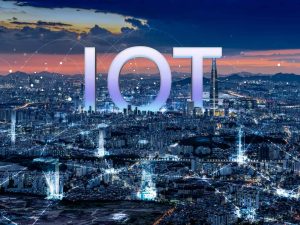Internet of Things Workshop

Course Overview
The course provides participants with a solid technical understanding of the different IoT technologies involved in modern IoT scenarios and its use cases, covering open and standardized technologies from LTE-M/Cat-0/1/3, NB-IoT and 5G to proprietary technologies like Sigfox, LoRaWAN, Weightless and more. The connectivity technologies are covered comprehensively and in relation to standardization, their pros and cons, regulatory aspects, security, ecosystem and use cases.
The impact of introducing IoT in a cellular network along with the need for new hardware, interfaces and channels will also be covered in great depth.
As security remains to be one of top concerns for IoT due to critical data being transmitted via government, transport and critical infrastructure, this training will deconstruct the different security challenges at all levels of the IoT ecosystem, explaining the risks and standard solutions available.
Several architectures and best practices will be discussed and linked with the use cases for industry verticals, covering benefits business models, challenges of each industry and use case.
Duration & Training Format
- Classroom: 3 days
- LIVE Virtual: 21 hours
*Note:
- A minimum of 8 or more participants is required for a Classroom session to commence.
- A minimum of 6 or more participants is required for a LIVE Virtual session to commence.
- LIVE Virtual courses can be conducted for 5 hours or 7 hours daily. Please note that the number of training days will be extended if you opt for 5 hours daily.
Upcoming Course Dates
There are no upcoming dates scheduled for this course. If you are keen on attending this training, please register your interest via our course enquiry form for us to open a new schedule for this course.
Course Objectives
At the end of the course, participants will be able to:
- Understand the IoT market and its opportunities for mobile operators
- Understand the main IoT connectivity technologies and their current market share and forecast
- Evaluate and compare the main LTE IoT technologies: NB-IoT and LTE-M
- Make informed decisions regarding the best IoT technology to implement in their networks
- Understand the technical and operational impacts of introducing NB-IoT in a current network which includes the core network (SCEF, S-SGN, new interfaces), RAN (new physical channels, new messages), security (network and device), coverage extension techniques, and new procedures (Power Saving Mode and eDRX)
- Analyze new traffic, capacity impacts, and link budget for IoT
- Identify and explore new business opportunities and use cases for IoT
- Have a clear understanding of the future of IoT, including the role of NFV/SDN, and 5G
Course Outline
- Introduction to Internet of Things
- IoT as one of the Biggest Opportunities for Mobile Network Operators
- IoT’s Current Snapshot in the Market and its Forecast
- Impact of IoT and its Value
- Challenges and Barriers
- IoT Functional Requirements
- Standardization and Regulations
- Technology and Industry Standards
- Impact of Standards and Regulations on an IoT Solution
- IoT Technical Overview
- IoT Communication Technologies
- Wired Communication Technologies
- Wireless Proprietary Technologies: Sigfox, LoRa, RPMA, Symphony Link, Weightless
- LTE Technologies: LTE-M, NB,IoT
- NB-IoT vs LTE-M Current Market Position
- NB-IoT Deep Dive:
- Changes in Architecture: Devices (eUICC), Core Network, RAN
- New Nodes: SCEF, C-SGN
- New Interfaces: T-6a, S6t
- RAN Enhancements: RRC/NAS
- New Physical Layer and Channels
- New Procedures: Coverage Extension, Power Saving Mode, eDRX
- Link Budget Examples
- Capacity and Traffic Study
- Data Transfer Options: RRC Resume, Data over Control plane and NIDD (Non-IP Data Delivery)
- Security and Privacy: Number 1 Concern in IoT Networks
- Authentication Procedures
- Access Control
- Privacy
- Devices Security (eUICC) and Software Updates
- Trust between Devices (Intermediaries and Middleware)
- Applications and end-to-end security
- Scaling IoT: SDN/NFV
- Impact of 5G in IoT
- IoT Business Opportunities
- IoT Segmentation
- Consumer
- Enterprise
- Industrial
- Digitalization and Digital Transformation of Vertical Industries
- Utilities
- Automotive
- Transportation & Shipping
- Retail
- Health
- Smart Cities
- Operators’ Options to Monetize IoT
- Access
- Security
- Analytics and Big Data
Note: A Certificate of Completion will only be issued upon achieving at least 75% attendance for the course.
Pre-requisites
It would be beneficial for participants to possess basic knowledge of networking, IP, software architectures and wireless communications.
Be the first to add a review.
Related Courses
Upcoming Classes
You cannot copy content of this page



